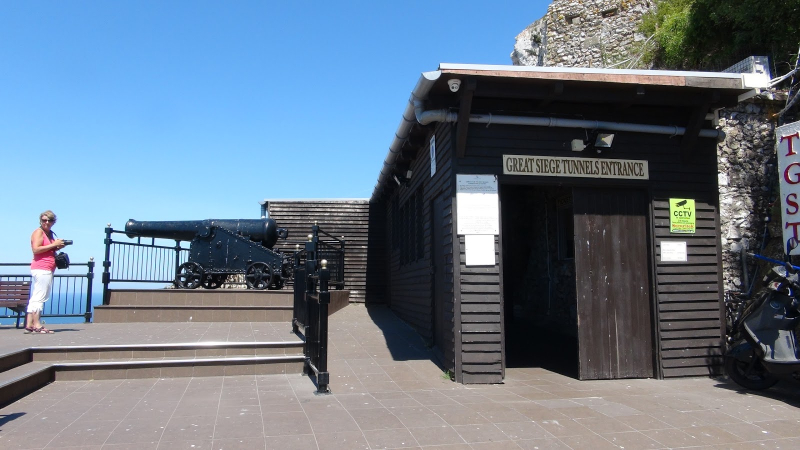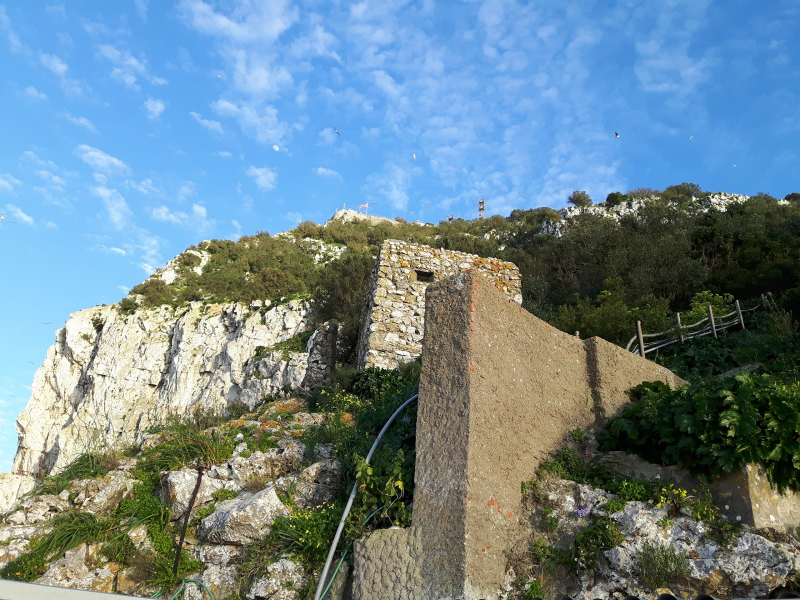The Great Siege Tunnels
The Upper Galleries, also known as the Great Siege Tunnels, are a network of tunnels inside the northern end of the Rock of Gibraltar in the British Overseas Territory of Gibraltar. During the late-eighteenth-century Great Siege of Gibraltar, the British excavated them out of solid limestone.
The garrison's requirement to cover a blind angle on the northeast side of the Rock prompted the construction of the tunnels. The only way to cover that aspect was to use a gun positioned on The Notch, a rocky outcropping. Because there was no way to build a roadway there due to the sheer cliff face, Military Artificers Sergeant-Major Henry Ince proposed digging a tunnel. On May 25, 1782, his idea was approved, and construction work began.
The tunnels were carved out of the limestone rock by hand, using a sledgehammer, a crowbar, and gunpowder. The cannon gun holes were originally created for a different purpose (as air vents), but their potential was quickly realized, and the tunnels quickly became gun emplacements. There are dioramas representing miners at labor and soldiers under siege, as well as some actual Victorian armaments.
The tunnel was only 82 feet long at first, but by the end of WWII, when diamond drills and better tunneling methods were available, the tunnels had grown to more than thirty miles in length, winding and turning as they went. The visitor to the Great Siege Tunnels today will notice that they seem to go on forever, and that you can enter on one side of Gibraltar and end up almost on the opposite side of the Rock.
Location: 1b Leanse Place, Gibraltar GX11 1AA, Gibraltar









